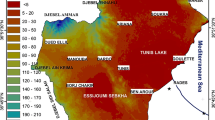Abstract
The purpose of this paper is to propose a four-stage conflict resolution model. In the first stage, a multicriteria model is developed for each of the conflicting parties, taken as decision makers (DMs) facing evaluations of a set of alternatives according to proper criteria. In the second stage, the composition of probabilistic preferences (CPP) methodology is applied to identify the best alternative for each of the conflicting parties. In the third stage, negotiation is carried out to remove alternatives and to focus on the subset of best alternatives for the group of DMs. The fourth stage consists of applying CPP again to choose one among the remaining alternatives. The model is illustrated by means of applying it to two different conflicts. The main features of the model are that it allows the DMs (i) to understand differences and proximities between the positions of each of them, (ii) to strategically reduce the initial set of alternatives, (iii) to advance in their positions towards a common goal, and (iv) to construct a unique final solution quickly.


Similar content being viewed by others
References
Almeida AT, Morais DC, Daher SFD (2012) Group decision and negotiation. Editora Universitária, Recife
Bashar MA, Kilgour DM, Hipel KW (2014) Fuzzy option prioritization for the graph model for conflict resolution. Fuzzy Sets Syst 246:34–48
Bashar MA, Hipel KW, Kilgour DM (2009). Fuzzy preferences in conflict resolution. In: proceeding international conference on system, man and cybernetics, 2332–2337
Bashar MA, Hipel KW, Kilgour DM (2010). Fuzzy preferences in a two-decision-maker graph model. In: proceeding IEEE international conference on system, man and cybernetics, 2964–2970
Bashar MA, Kilgour DM, Hipel KW (2011). Fuzzy preferences in the sustainable development conflict. In: proceeding IEEE international conference on system, man and cybernetics, 3483–3488
Bashar MA, Kilgour DM, Hipel KW (2012). Fuzzy truth values in option prioritization for preference elicitation in the graph model. In: IEEE international conference on system, man and cybernetics, 3081–3086
Dong YC, Chen X, Herrera F (2015) Minimizing adjusted simple terms in the consensus reaching process with hesitant linguistic assessments in group decision making. Inf Sci 297:95–117
Fraser NM, Hipel KW (1984) Conflict analysis: Models and resolutions. North-Holland, New York
Ghodsi SH, Kerachian R, Estalaki SM, Nikoo MR, Zahmatkesh Z (2016) Developing a stochastic conflict resolution model for urban runoff quality management: application of info-gap and bargaining theories. J Hydrol 533:200–212
Howard N (1971) Paradoxes of rationality: Theory of metagames and political behavior. MIT Press, Cambridge, MA
Ke GY, Fu B, De M, Hipel KW (2012a) A hierarchical multiple criteria model for eliciting relative preferences in conflict situations. J Syst Sci Syst Eng 21(1):56–76
Ke GY, Li KW, Hipel KW (2012b) An integrated multiple criteria preference ranking approach to the Canadian West Coast port congestion problem. Exp Syst Appl 39(10):9181–9190
Ke Y, Li KW, Hipel KW (2008). A comparison of two preference elicitation approaches in the graph model for conflict resolution. In: proceeding international conference on system and, man and cybernetics, 3268–3273
Kilgour DM (1995) Book review: Theory of moves. Group Decis Negotiat 4:287–288
Kilgour DM, Hipel KW, Fang L (1987) The graph model for conflicts. Automat 23(1):41–55
Lempp F (2016) A logic-based model for resolving conflicts. Int J Confl Manag 27(1):116–139
Raiffa H, Richardson J, Metcalfe D (2002) Negotiation analysis: The science and art of collaborative decision making. Harvard University Press, Cambridge, MA
Rego LC, Dos Santos AM (2015) Probabilistic preferences in the graph model for conflict resolution. IEEE Trans Syst Man Cybern Syst. 45(4):595–608
Roy B (1996) Multicriteria methodology for decision aiding. Kluwer, Dordrecht
Roy B (2005) Paradigms and challenges. In: Greco J, Ehrgott S (eds) Multicriteria decision analysis: State of the art survey. Springer, Boston, pp 3–24
Sant’Anna AP (2015). Probabilistic composition of preferences, theory and applications, Springer
Sant’Anna AP, Sant’Anna JL (2019) A principle of preference concentration applied to the unsupervised evaluation of the importance of multiple criteria. Pesqui Oper 39(2):317–338
Silva MM, Kilgour DM, Hipel KW, Costa APCS (2017a) Probabilistic composition of preferences in the graph model with application to the New Recife project. J Leg Aff Disput Resolut Eng Constr 9(3):1–13
Silva MM, Hipel KW, Kilgour DM, Costa APCS (2017b) Urban planning in Recife, Brazil: Evidence from a conflict analysis on the New Recife project. J Urban Plan Dev 143:05017007
Von Neumann J, Morgenstern O (1944) Theory of games and economic behavior. Princeton University Press, Princeton, NJ
Xu H, Hipel KW, Kilgour DM, Fang L (2018) Conflict resolution using the graph model: Strategic interactions in competition and cooperation. Springer
Yu J, Hipel KW, Kilgour DM, Zhao M (2016) Option prioritization for unknown preference. J Syst Sci Syst Eng 25(1):39–61
Acknowledgements
This study was partly financed by research programs funded by the Brazilian Research Council (CNPq), the National Institute of Information and Decision Systems (FACEPE/INCT-INSID), and the Coordenação de Aperfeiçoamento de Pessoal de Nível Superior—Brasil (CAPES), Finance Code 001.
Author information
Authors and Affiliations
Corresponding author
Additional information
Publisher's Note
Springer Nature remains neutral with regard to jurisdictional claims in published maps and institutional affiliations.
Rights and permissions
About this article
Cite this article
Sant’anna, A.P., Costa, A.P.C.S. & Silva, M.M. A Novel Conflict Resolution Model with The Composition of Probabilistic Preferences Methodology–CRMCPP. Group Decis Negot 31, 363–385 (2022). https://doi.org/10.1007/s10726-021-09771-w
Accepted:
Published:
Issue Date:
DOI: https://doi.org/10.1007/s10726-021-09771-w




